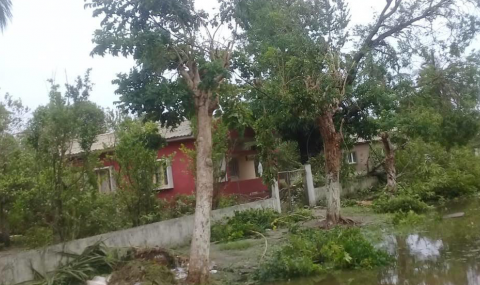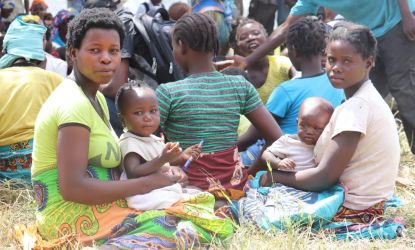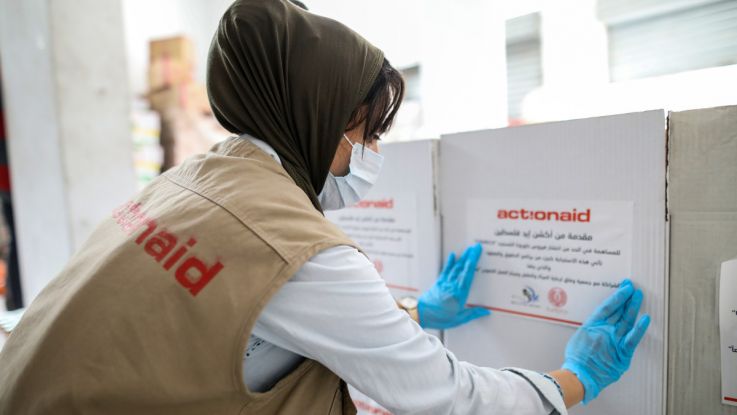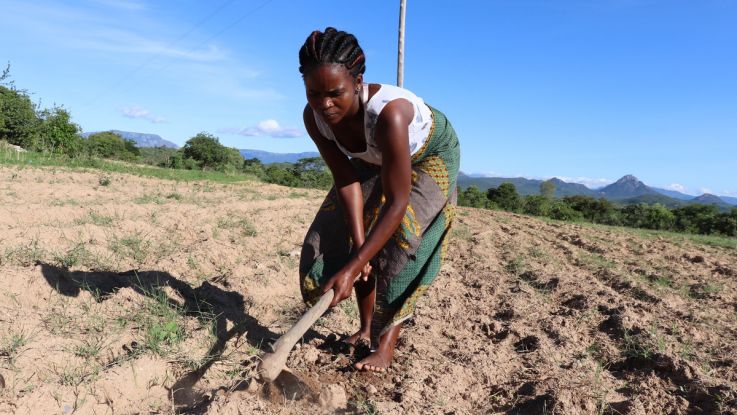Cyclone Idai in Southern Africa 2019

Heavy rains after Cyclone Idai resulted in severe flooding in Mozambique.
What was ActionAid's response?
ActionAid's initial response included distributing food, blankets, water sterilising tablets, shelter, clothes, mosquito nets and sanitary protection for women and girls in the three countries.
Initial emergency response
- In Mozambique, ActionAid distributed sanitary kits, school books and established women-friendly spaces.
- In Zimbabwe, ActionAid provided thousands of kilograms of food and cooking oil, distributed sanitary pads, underwear packs, towels and soap.
- In Malawi, ActionAid reached around 12,700 people with our initial rapid response. We worked with local women’s forums to ensure the protection of women and girls in evacuation camps, and distributing food, lamps, utensils, sleeping mats, soap and mosquito nets.
Long-term response:
- In Mozambique, ActionAid is training women in farming to support their livelihoods and there are plans to distribute agricultural tools to 2,000 people.
- ActionAid has started to repair and rebuild schools and reconstruct shelters for affected people in all three countries.
A huge thank you
We'd like to thank everyone who makes this support possible, including the DEC, The Alborada Trust and many individual supporters.

Women-led emergency response in Zimbabwe
Majiva, a survivor from Chimanimani, Zimbabwe is a mother of three. All of her children and her mother went missing after Cyclone Idai struck and caused heavy rainfall and flooding in her neighbourhood.
Majiva was carrying her baby on her back while her other two children were by her side as she attempted to cross a flooded road. The intensity of the rain increased causing the baby to slip off Majiva's back and sweeping away the rest of the family.
My house has gone along with all my family members, I am left all alone. I used to run a flea market, it's all gone. I don’t have my national Identity card as well as my passport, and don’t know where I will start from."
ActionAid has set up women-friendly centres in Zimbabwe where Majiva, and others like her can get the psychological support they need after the traumatic effects of the cyclone.
Majiva lost her three children and her mother in the flooding caused by Cyclone Idai.
Takaitei Bote/ActionAid

Regina, 30, holding one of her twins at a camp in Mozambique.
ActionAid
Helping women with life-saving support
When the cyclone struck Mozambique, Regina lost her home.
She is 30 years old and is now living in a camp for displaced people, with her twin children.
Thanks to support from ActionAid donors, we helped Regina - and many others who lost their homes - by setting up camps and providing essential relief items.
These included hygiene kits, aqua-tablets, water containers, blankets, clothes and food.
About cyclones and tropical storms
What is a cyclone?
Like a hurricane and typhoon, a cyclone is a severe type of tropical storm. They are broadly the same, but are called different names based on where in the world they appear.
What is a tropical storm?
A tropical storm is a localised, very intense low-pressure wind system, forming over tropical oceans.
In its weaker form it is known as a ‘tropical depression’. But if it intensifies, and maximum sustained winds reach 39 mph, the depression becomes known as a ‘tropical storm’.
Then, if it reaches maximum sustained winds of 74 mph, the storm is classified as a hurricane, typhoon or tropical cyclone — depending on where in the world it originated.
What is the difference between a cyclone, typhoon and a hurricane?
-
Cyclones are formed over the South Pacific and Indian Ocean.
-
Hurricanes are tropical storms that form over the North Atlantic Ocean and Northeast Pacific.
- Typhoons are formed over the Northwest Pacific Ocean.
How exactly do cyclones cause damage?
Cyclones are mainly associated with the strong, destructive winds that cause extensive property damage and deforestation. The resultant debris is dangerous as it becomes airborne.
The strong winds can also cause large waves of up to 15 metres high, which are hazardous to shipping. Storm surges, typically 2 to 5 metres above sea level, cause extensive flooding and damage in coastal regions, and often death by drowning.
Cyclones can also pick up two billion tons of moisture per day and release it as heavy rain. This also leads to extensive flooding, often not only in coastal regions but well inland from where the cyclone made landfall.
Finally, cyclones sometimes spawn tornadoes as they hit land, which can cause extreme wind damage.
Page updated 6 February 2025



